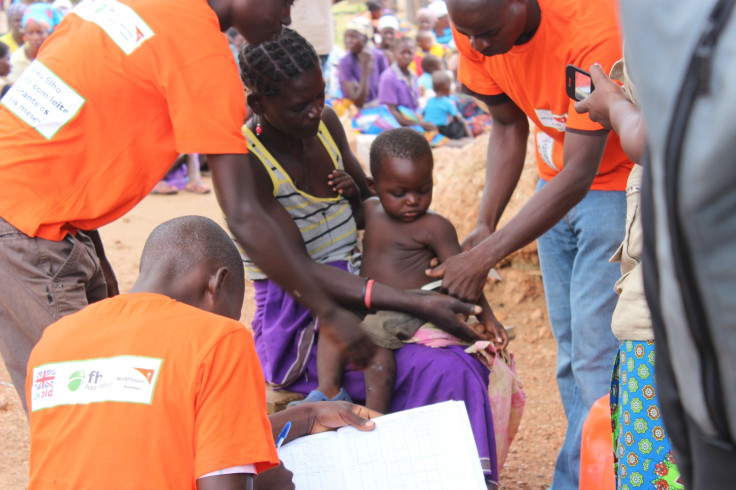This video shows how armyworms are destroying Africa's crops and threatening starvation
Crop-eating pest has invaded at least 20 countries in Africa, where farmers are already coping with drought.
Drought-stricken Kenya is the latest country in Africa to experience the devastating effects of a crop-eating pest known as "fall armyworm" (FAM).
Their presence in the African nation was officially confirmed in April by the Ministry of Agriculture, Livestock & Fisheries. The government has since disseminated information on the pest and launched an awareness campaign among farmers.
This month, global children's charity World Vision visited Kenya's north-west, where armyworms are thought to have affected 40% of farms, destroying at least 70% of grain and cereal crops.
"This pest has the potential to cause national food insecurity unless the appropriate measures are implemented," said the charity. "The pest is therefore of great socioeconomic importance and warrants urgent attention."
Armyworms are caterpillars native to North and South America, and were first recorded as an invasive species in Africa in early 2016. They are known for eating cereals, particularly maize and rye, staple foods in many nations in Africa.
Their name derives from their eating habit, as they march through crops devastating entire harvests. They are difficult to track and eliminate because they eat during the night, while they hide during the day.
As the pest is new to Africa, governments have no previous experience of dealing with it.
Sina Luchen, Agronomist at the Southern Africa section of FAO , told IBTimes UK: "It is not yet clear how the pest came to Africa. It is possible that it came through agricultural commodities or perhaps through wind drift as the pest is a good flier. As an immediate emergency response to save crops from the pest, governments in affected countries supported farmers with pesticides, spray and safety gear."
World Vision and other organisations have called on governments of affected countries to invest in research to develop appropriate measures to tackle the invasion.
Meanwhile, experts have warned the armyworm would cause damage worth about $3bn to Africa's maize crop in the next 12 months.
Experts who took part at a conference on armyworms in Nairobi in April said countries in Africa could learn from Brazil, which has also been coping with the pest. The Southern American country is believed to spend $600m annually to contain the invasion.
Drought in Africa

Most of the nations affected by the armyworms – particularly in Southern and East Africa – are already coping with food scarcity due to a drought that began in 2015.
Drought in Africa
Thousands of households have seen their harvests depleted due to lack of rainfall for two consecutive seasons.
The drought has been linked to warm water in the Pacific Ocean, a phenomenon known as El Nino, exacerbated by climate change.
Earlier this year, the Kenyan government declared the drought a national disaster in the country and appealed for international assistance.
In response, UN agencies and partners launched an appeal aiming to raise $165.71m (£121m)to provide 2.6 million people with life-saving assistance. As of 21 May, the appeal raised 27%, or $44.5m, of the necessary funds.
© Copyright IBTimes 2025. All rights reserved.




















